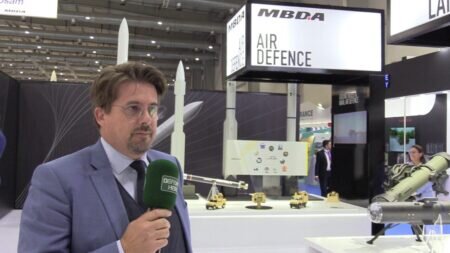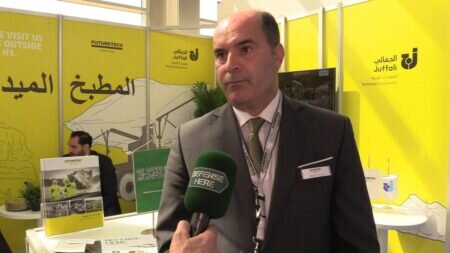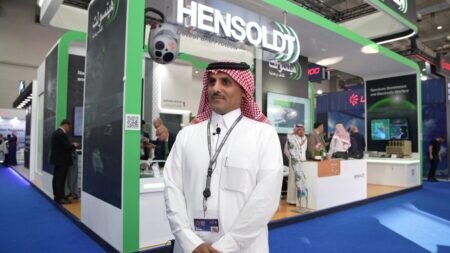Sustainability measures have become integral to every industry's production processes. However, the defense industry faces unique challenges due to climate change, which poses significant threats to global security, an issue that was prominently discussed at the recent World Defense Show (WDS) in Riyadh, Saudi Arabia, held in February.
Tom Middendorf, Chairperson of the International Military Council on Climate and Security (IMCCS), delivered a compelling address emphasizing the urgent need for defense organizations to climate-proof their capabilities.
He outlined four key reasons why environmental sustainability is critical for the defense sector: global trends and resource scarcity, climate change acting as a risk multiplier, resilience against severe weather events, and evolving policies and legislation.
Middendorf noted the increasing global population, which is expected to double this century, leading to greater demands for water, food, and resources. Concurrently, there's a diminishing availability of these essential resources.
He explained how two additional trends increase the difficulty of bridging that growing gap.
“The first is climate change, leading to sea level rise, desertification and increasing vulnerability to flooding. Climate change reduces the global livable and arable space and effects our ability to meet those growing demands,” he explained.
This is exacerbated by a second trend – “the geopolitical move from globalization to a more fragmenting world, which affects the multilateral mechanisms that we have and makes it harder to find global solutions to global problems.”
Middendorf stressed the unsustainability of current resource consumption patterns and advocated for innovation in resource efficiency and circularity to mitigate future conflicts arising from resource scarcity.
“It's clear that we cannot bridge that gap by producing more in the way we are doing now. It's clear that competing harder over access to resources is not a sustainable solution. It's also clear that we need to reduce our resource dependency through innovation on circularity, and the use of alternative less scarce materials, because if we don't bridge that gap, we will only deplete our resources more rapidly, resulting in severe supply chain disruptions, and we will only see more global competition potentially leading to conflicts,” he said.
On a regional level, Middendorf cited climate change as a risk multiplier, underscoring how it exacerbates existing tensions and drives instability globally, something he had faced firsthand.
He said: “I've been involved in more than 20 crisis areas all over the world. In Afghanistan, I experienced how water scarcity led to tensions among farmers and how that was exploited by extremists. In Iraq I saw how water was used as an instrument of power, with the occupation of the Mosul dam. In Somalia, Sudan and Mali, the increasing droughts drove people away from their homelands, driving them into despair and into the hands of extremist organizations. I saw how climate change in itself may not directly lead to conflict, but how it acts as a driving force of local and regional instability.”
He emphasized the need to address water stress, drought-induced migration particularly in Africa, and vulnerability to flooding in densely populated regions.
He said: “Look especially to Southeast Asia, home of almost two billion people, often living in mega cities located at rivers and coastal areas. This is also the factory of the world. With most of our supply lines running through these areas it's like a ticking bomb. One can only imagine the disastrous and disruptive potential effects of rising sea levels and intensifying rain periods to these urbanized areas.”
Middendorf highlighted the increasing frequency and severity of natural disasters, stressing the importance of protecting assets and infrastructure, saying: “Every year we witness new records being set. Last year we had 66 natural disasters with more than US$1 billion damage each. Overall, the damage was $350 billion with 95,000 victims all over the world, which probably doesn't include the second order effects.”
“Globally only one third of those costs were covered by insurance. The U.S. alone had 28 of these disasters with $93 billion in damages and the trend is going up, making it increasingly difficult to insure these kinds of risks. This makes protection of our assets, of our hubs, of our supply chains, and of our vital infrastructure, also a crucial element of sustainability. Next to the need to protect fighting infrastructure, defense organizations can also expect an increasing demand for humanitarian assistance and disaster relief operations.”
Middendorf acknowledged the global shift towards net-zero emissions and the integration of climate considerations into defense policymaking. He emphasized the need for defense organizations to reduce their carbon footprint while maintaining operational effectiveness.
He said: “Defense is the largest emitter of CO2 in any country and has a responsibility to take. At the same time, however, there is a genuine concern that moving to net zero affects the effectiveness of operational units. It is therefore crucial to develop sustainability in such a way that it also contributes to operational effectiveness and this can be achieved through a focus on self-sufficiency.”
“The more operational units can generate their own energy, their own water, print their own spare parts, use remote diagnostics, etcetera, the more autonomous they can become and the more we can reduce the enormous logistical supply chains that we have now.”
To address these global challenges, Middendorf proposed a three-pronged approach to defense energy transition. The first is adaptation of peacetime facilities, implementing civil best practices and technologies in non-operational settings, such as harbors, airports and barracks.
He suggested that the second level should focus on light and medium operational capabilities where civil technologies can be used and integrated into new military concepts. He explained: “This is about adapting our current force and about being a smart integrator of new technologies that support self-sufficiency. Defense could create living labs with defense industries for experimentation and fielding of these kind of concepts.”
The final area is the energy intensive high-end capabilities, such as naval vessels, air fighters and heavy combat vehicles, where technology is not as advanced. He suggested that the industry needs to invest in research and development for energy-efficient platforms and equipment, with built in self-sufficiency.
Middendorf also stressed the importance of public-private cooperation in advancing energy transition efforts, noting the civil sector's leadership in innovation, and pointing out that the defense sector has some catching up to do, saying: “If we want to futureproof our military forces and our businesses it's crucial that we build climate resilience in a public-private effort. We need to become the quickest to adapt.”









